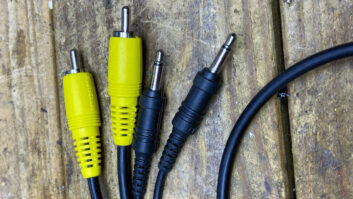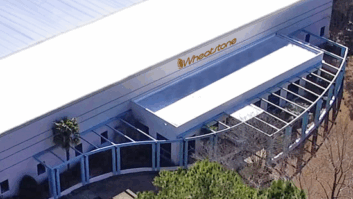Our lives as engineers get so caught up with “stuff” that sometimes it’s hard for us to keep track of it all.

Fig. 1: Don’t fret about this yucky situation; you can rehab corroded contacts.
Take the issue of replacing equipment batteries. A good job for an engineering intern is to log all equipment that uses batteries, listing the equipment and the type of battery required. Then, on an annual basis, replace the batteries throughout your plant. The practice is cheap insurance, and you will avoid discoveries like the one in Fig. 1.
This remote temperature monitor was mounted up on a wall. Unless you were really looking for it, you’d miss it. There it sat until one day the engineer noticed it wasn’t working. But wait, don’t throw it away. If you have a little patience and about five minutes, you can restore the corroded contacts to like-new condition.

Fig. 2: Simple tools help you combat the corrosion. Grab a toothbrush, some baking soda and a bottle of distilled water. The job will get a little messy, so lay down a paper towel or two to collect corrosive dust as you remove the batteries.
As seen in Fig. 3, use a screwdriver to pry the batteries gently out of the case. (Be careful to keep caustic crud away from your face, especially your eyes. Goggles and gloves aren’t a bad idea.)
On a corner of the paper towel, sprinkle a teaspoon of baking soda. Add a little distilled water in order to make a paste. You can mix the paste using an old toothbrush.
Shake the battery compartment to get rid of as much of the corrosion flakes as possible, seen in Fig. 4.

Fig. 3: Use a screwdriver to remove the batteries carefully.
Load the toothbrush with the paste and gently scrub the battery contacts. Like magic, the remainder of the corrosion will disappear. You may need to repeat the process a couple of times until the contacts are clean.
Rinse the toothbrush with the distilled water and run the damp toothbrush over the contacts to remove the remaining baking soda. Wipe with a damp paper towel or napkin to remove residue. Leave the compartment open and let it dry over night.
The next day, check to make sure there is no moisture. Write the date on your batteries, install ’em and power up.
Make sure every battery-powered (or battery-backed-up) device is listed on your master battery inventory. Change batteries annually, if not more often. If a battery isn’t doing its job and AC power fails, the device is not backed up. This can be devastating to critical systems like transmitters or remote control equipment.

Fig. 4: Gently scrub the battery contacts with the basic soda mixture.
In addition to keeping track of battery-powered equipment, your log serves as a battery inventory. You’ll know just how many batteries you’ll need, and their type, before you start opening equipment at replacement time.
* * *
When planning an equipment purchase, do you gather comments via online searches? Several engineers have told me they take full advantage of the Internet this way to learn the “word on the street” (or the Web) before spending money. The strategy is helpful especially when you are shopping for consumer or semi-pro gear, which tend to have more of a user base. The comments may surprise you and even save you from a costly error.

Fig. 5 Use a small brush or another old toothbrush to remove the remaining paste gently from the battery compartment.
Cases in point are “galvanized” bolts that start rusting almost immediately, and screw heads that pop off when being driven into wood. You’ll find them sold in plastic packs at the “big box” stores; they likely are Chinese imports.
A far better source is McMaster-Carr. There you can find ANSI- and ASTM- specification hardware. The company also carries code hardware. Heads won’t snap off these.
I know there are times when you just “gotta have it … now.” But a little planning comes in handy. Today’s broadcast engineer really doesn’t have the luxury of not doing it right the first time.
* * *
Milan Chepko was interested in the Aug. 1 Workbench tip about using conductive concrete to protect buried radials and keep them from thieves.
No doubt it works well, but Milan thought of three possible disadvantages.
First, the conductivity will be less than that of the soil by itself — probably not a significant difference, but still reduced.
Second, the strength of the conductive concrete is noted to be less than regular concrete mix. Again, probably not important in this application; but be aware that you are giving up something.
Third, Milan guesses that this mix will be more expensive than regular concrete mix; and he’s right.
Instead, he suggests digging a wide trench, perhaps V-shaped, and running the copper radial or strap along the center of the bottom as usual. Depending on the terrain, it might be good to “tack” it down every few feet so it remains in place.
Then cover it with a few inches of the soil you removed in making the trench. That ensures that the copper is surrounded by the soil, giving the best conductivity. Spray a little water on the soil to let it compact better and make the next step easier.
Once that is all tamped down, pour a layer of regular concrete, covering the soil and copper wire. When the concrete has set, perhaps overnight, fill the rest of the trench with the remaining soil as usual.
The copper is in full contact with the soil; the concrete forms a firm shield above it and costs less than the special conductive concrete mix. Further, it is readily available.
Milan’s suggestion may be a little more labor-intensive, but the extra work may discourage theft, especially in the case of copper strap.
Milan works with Veni Vidi Video near Atlanta. He says local television news reports on copper theft stories several times a week. Even the copper cores of air conditioning units are falling prey to thieves.
Contribute to Workbench. You’ll help your fellow engineers, and qualify for SBE recertification credit. Send Workbench tips to [email protected]. Fax to (603) 472-4944.
Author John Bisset has spent 43 years in the broadcasting industry, and is still learning. He is SBE Certified, and is a past recipient of the SBE’s Educator of the Year Award.






